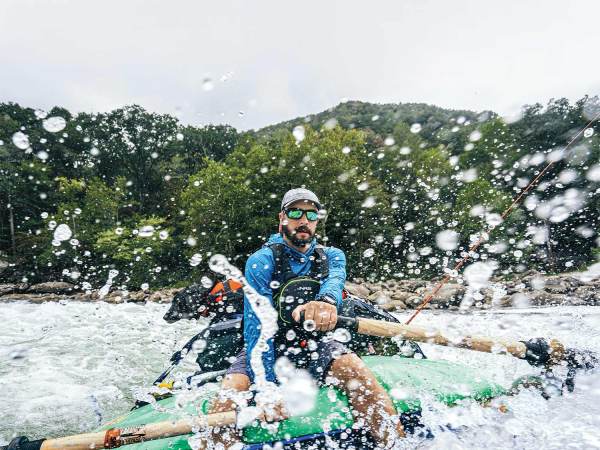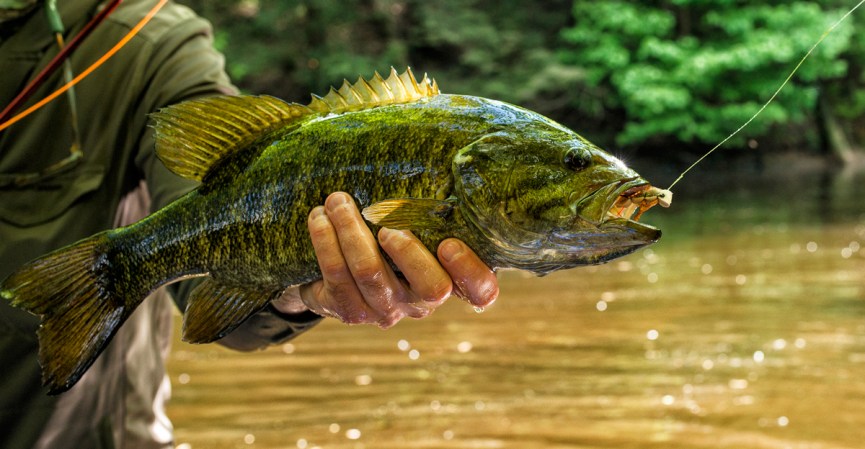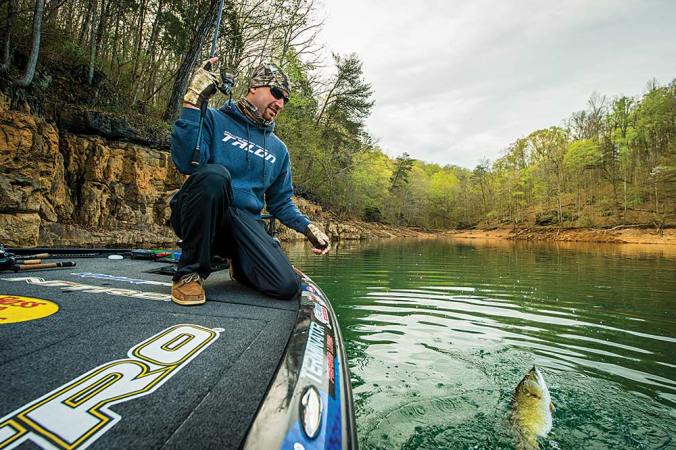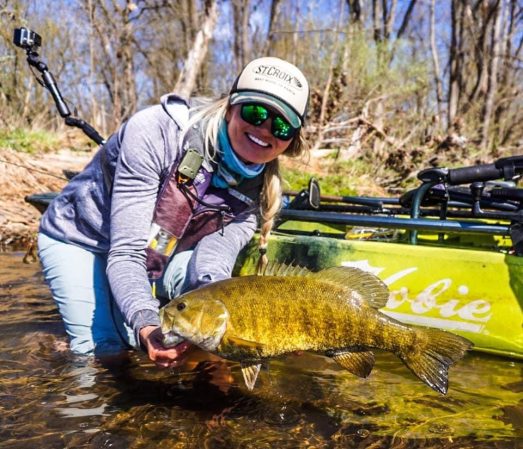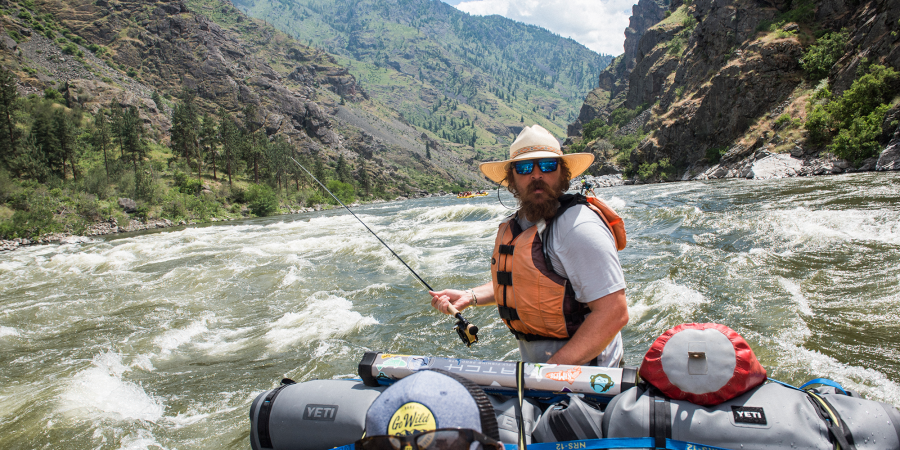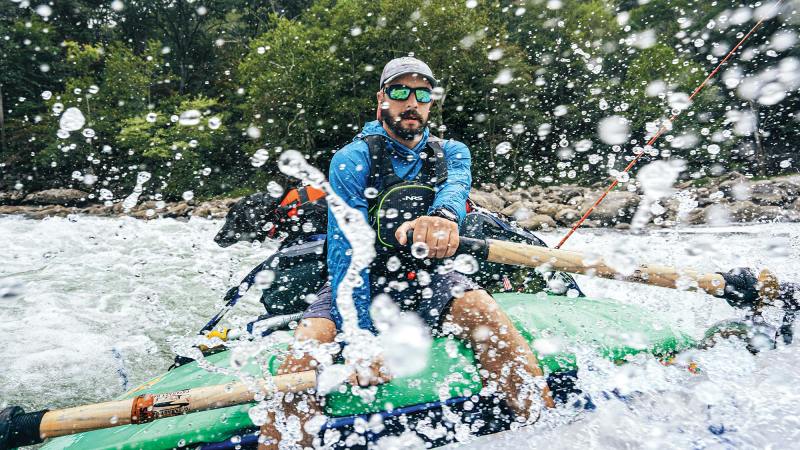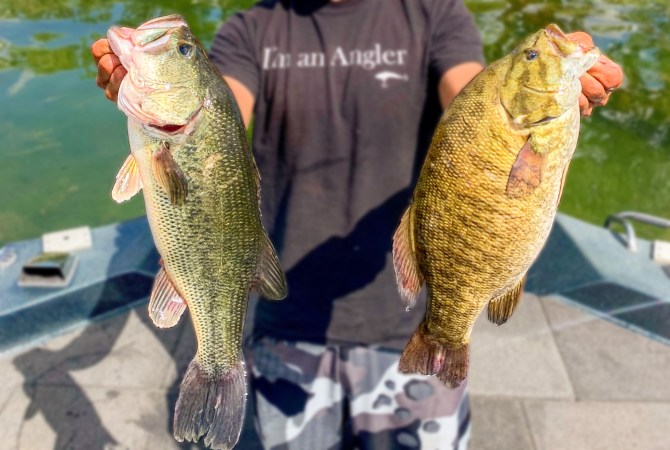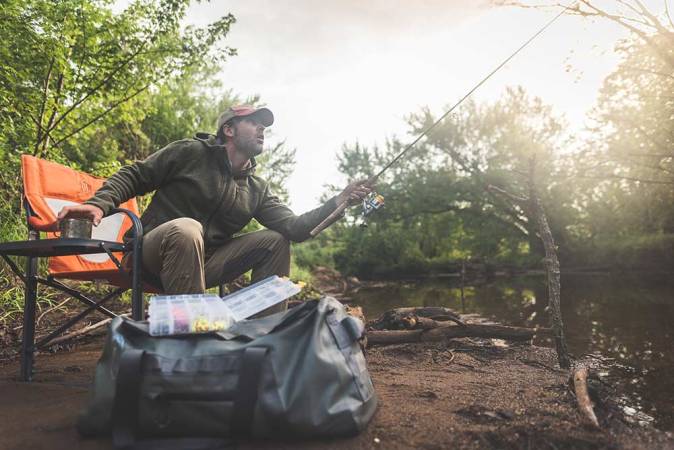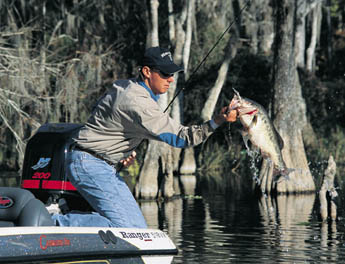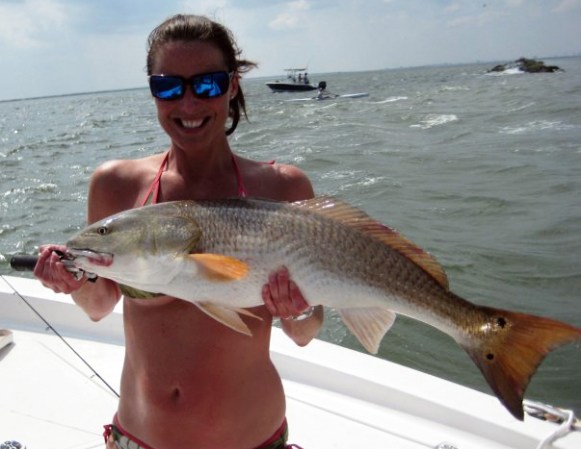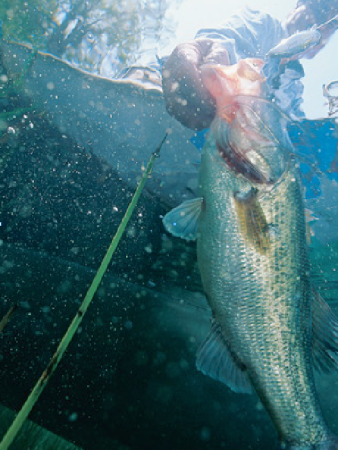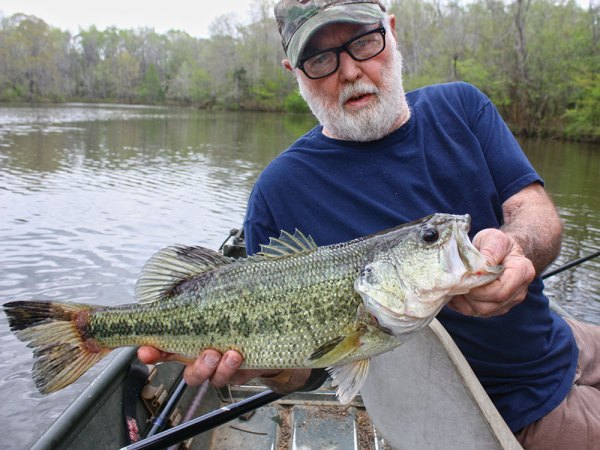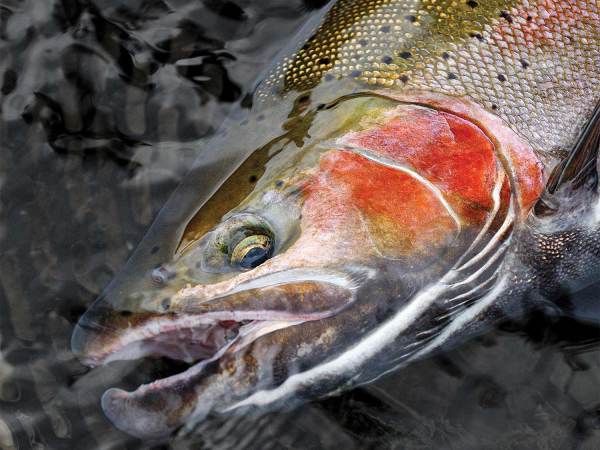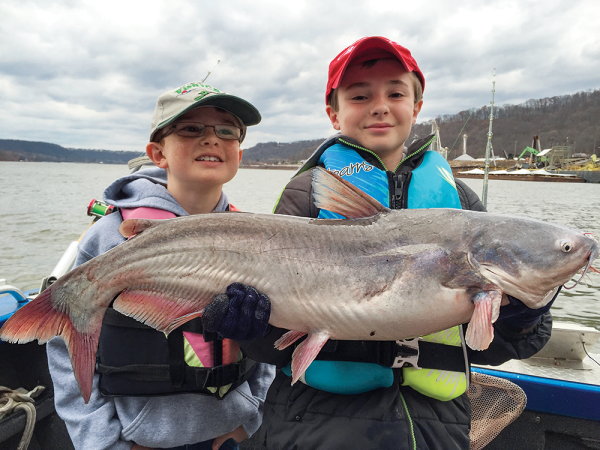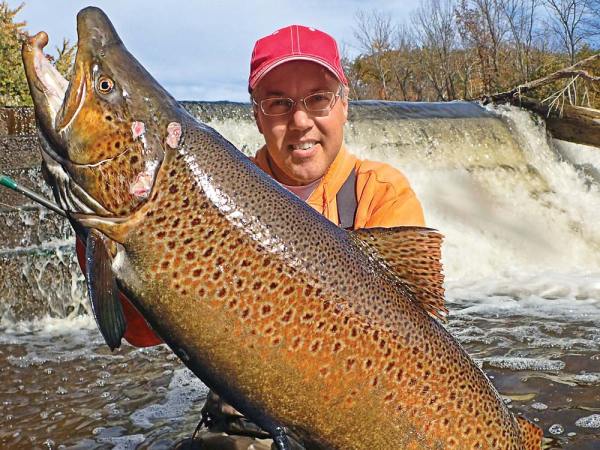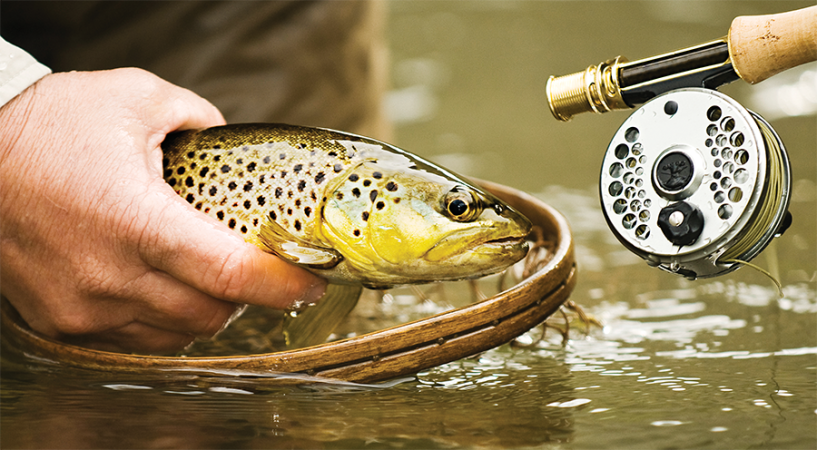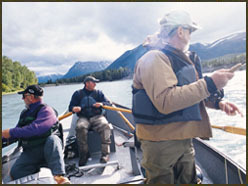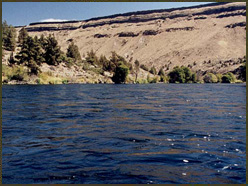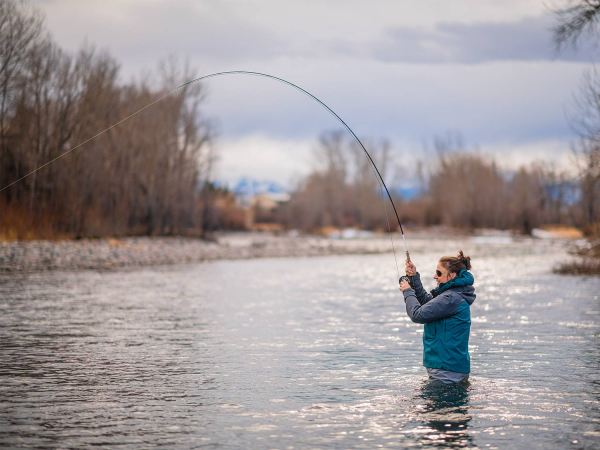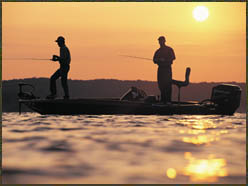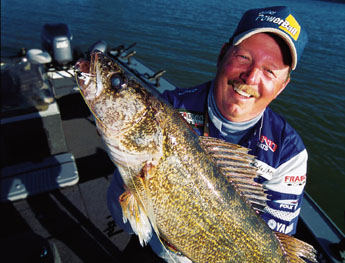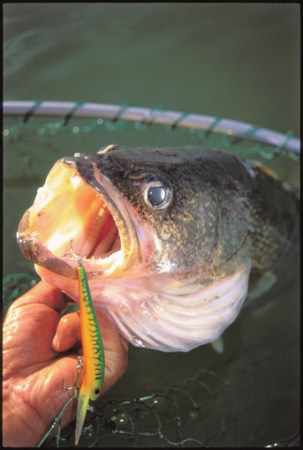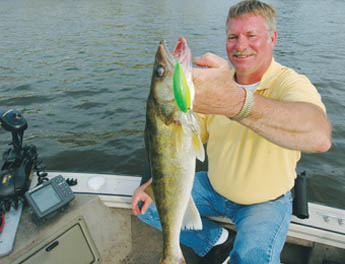Rivers don’t get fished as much as they should. Many anglers feel intimidated by water that won’t stand still and therefore congregate on lakes, ponds and reservoirs. If you develop some basic “reading” skills, however, you’ll find rivers far less perplexing. For several years I’ve fished rivers and streams almost exclusively and have enjoyed uncrowded angling for walleyes, catfish, bass, pike and crappies. Here’s how to expand your angling repertoire to include moving waters.
THE RUN OF A RIVER
Unless they’ve been straightened by man-made excavation, all rivers share a basic shape. Although the width of their meanders may differ, rivers wander back and forth in a succession of S-shaped curves. [See Figure 1.] The river’s main current sweeps along the outside bends and disperses across the river’s midsection in the straightaway between bends.
The river’s deepest water will be found on the outside bends, where the full force of the current scours deep holes. This is where fish in that area of the river will stay most of the time, whether feeding or not. Often the outside bend will have a steep bank. On many rivers, engineers install rock riprap to curb erosion on the outside bends. Riprap frequently provides good fishing for smallmouth bass, white bass and walleyes. Catfish will also use riprap areas during their spawning season. Where riprap is not installed, erosion may undercut mature trees and topple them into the water, creating ideal habitat for crappies, catfish or pike.
The river’s shallowest water will be located on the inside bends and in the straightaways between bends. Because the current is relatively slow on inside bends, sand and fine gravel will deposit here to form a soft, shallow bar. Riffles will often be found in the straightaways, where the river gurgles over shallow rocks. On smaller rivers, bars and riffles create hazards for boaters and access for wading anglers. The best place for a wading angler to cross a small river is diagonally through the straightaway, from inside bend to inside bend. However, make a few casts before crossing; fish often prowl riffles and bars for minnows and crayfish, especially in periods of low light. The downstream end of the riffle, where it plunges into the next deep hole, is also a good fish location.
With the basic riparian shape firmly in mind, you can predict water depth and bottom content in a river, even if poor water clarity makes the bottom difficult to see. Knowing a river’s basic shape will boost your confidence in wading, boating, and fishing it. But you must still master another skill: deciphering the river’s currents and how fish relate to them.
LOCATE FEEDING LANES
The most crucial skill in reading a river is the ability to recognize feeding lanes, which occur where slow current adjoins faster current. All species of river game fish seek places where current is slow, but where faster currents are quickly accessible. By holding in slow current, a fish minimizes the energy it must expend to hold its position. And by remaining near faster water, the fish maintains access to the river’s “conveyor belt” of food.
In any given stretch of river, current speed is not constant from bank to bank or top to bottom. Current speed varies with lateral position and depth. Regarding lateral position, the current speed is slowest at the banks and increases as it gets closer to the river’s main line of current. With regard to depth, the current speed is slowest at the bottom and increases as it rises toward the surface. Some fish will hold near the bank, just off the main current; their food comes alongside them on the main current. Other fish will hold at midriver, near the bottom; their food drifts over them on the main current. To catch river fish consistently, present a bait or lure in the feeding lane between the main current and the slack water where fish are holding.
Bank irregularities or obstructions in the river create further variations in current speed and thus more places where fish might hold. For example, midstream boulders, shoreline jetties, bridge pillars and fallen trees along the bank create pockets of slack water–eddies–on their downstream side, where fish might hold. Usually the largest and most active fish will occupy the best feeding locations at the upstream end of the eddy, closest to the obstruction. In all cases, fish will face into the current. This means that some fish will actually face downriver, since the eddy’s current swirls in a circular motion.
A river shares its secrets at the surface. Pay attention to lines, curves and swirls on the water. They show where feeding lanes exist. Note the general character of the surface: a smooth, glassy surface indicates a flat, relatively featureless and probably soft bottom, whereas a dimpled or “boiling” surface indicates a rocky bottom. A surface dimple or boil will be located downstream from the boulder that causes it; how far depends on the current’s force. To reach a fish holding in the boulder’s pocket, cast upstream of the surface boils and work the bait down the side or top of the structure.
Sit Back and Relax Fishing a river out of a canoe all day can be back-breaking. To ease the pain, take along a canoe seat like the Canoe III Air from Crazy Creek. Nylon straps connect the bottom to the sides, so the user’s weight essentially supports his back. The seat is padded with 1 1/2 inches of EVA foam and weighs 22 ounces. ($40; 800-331-0304; crazycreek.com)
Best Spots for River Fish
A CURRENT BREAKS Smallmouth bass might hold in slack-water pockets behind boulders in the riffle if there is sufficient depth to make them feel safe. Approach from downstream. Cast upstream past the boulder and bring a lure downstream through the feeding lane, as close to the boulder as possible.
B FEEDING LANES The point where the numerous feeding lanes converge is a prime location for smallmouth bass, channel catfish and, occasionally, walleyes. The dimpled surface here indicates a rocky bottom. Fish holding here will be very close to the bottom, since they have no obstruction to block the current.
C DEPTH CHANGES
Look for active walleyes where the dimpled surface calms and the water deepens. This is the point where the riffle pours into a deep hole. The change in surface character indicates a change in bottom composition–always a magnet for walleyes. Drift live bait along the bottom here and hang on.
D CHANNEL EDGES The outer edge of the bar, where it meets the main current, can be a good walleye location as darkness approaches. As light levels decrease, inactive walleyes lying deep in the bend pool will chase minnows up onto the bar or into the riffle between A and B.
E BANK COVER The fallen tree on this outside bend attracts crappies and bluegills. They’ll be suspended off the bottom among the branches, which provide slack water pockets where they can ambush minnows and aquatic insects. Presentation will be difficult, but the rewards can be great. Try fishing from the bank on the outside bend, using a slip-float to suspend bait on the downstream edge of the tree. Expect to get hung up a few times. In addition to crappies and bluegills, catfish will also use the fallen tree as shelter. Expect to find catfish near the bottom on the tree’s outer edges. Approach from the shallow bar on the inside bend and cast across the stream toward the tree.
F OTHER STRUCTURE The riprap here can produce smallmouth and white bass. Approach from downstream, staying near the bank of the outside bend. Cast upstream and work the seam where slack shoreline water meets the main current.

